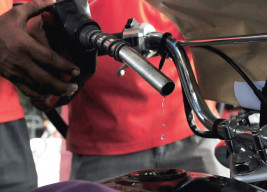
The federal government claims that China is investing $35 billion in different energy projects with Sindh and Khyber Pakhtunkhwa (K-P) having the highest share, followed by Balochistan and Punjab. This is foreign direct investment (FDI), meaning that the Pakistan government has no say in deciding the location of the projects. Moreover, it has also been claimed that China prefers the eastern route and that there is no Chinese investment for constructing new roads.
While Chinese investment preferences should be respected, the federal government should not be oblivious to its negative distributional impact. Empirical evidence shows that FDI increases regional inequality in low and middle-income countries since the many different regions of a country usually do not receive it in equal measure. Nevertheless, the government through various policy instruments can mitigate the negative distributional impact of FDI on the state of regional equality. In this regard, China’s example is very relevant. In China, FDI has been concentrated on strongly urbanised coastal regions and has been a major driving force behind the strong increase in regional inequalities in the 1980s and 1990s. However, the Chinese government has implemented special development programmes for the lagging western part of the country, which seemed to have been quite successful. As a matter of fact, the CPEC is a part of the efforts aimed at bringing the underdeveloped western parts of China on a par with the rest of the country. Rather than following the Chinese way, the Pakistan government has ostensibly let the market shape and determine public policy choices.
Out of the $21 billion worth of “priority energy projects”, there is only one project in K-P (worth $1.8 billion) and two in Balochistan (worth $1.3 billion), accounting for 8.5 per cent and six per cent, respectively, of the total investment categorised as “priority”. The Gaddani power project, which was abandoned by the federal government in January 2015, has been re-included in the “actively promoted projects”. The government maintains that no project can be made area-specific except coal projects, which have an inherent area bias because of the natural location of the source. Based on this logic, it won’t be unfair to argue that the power generation potential of Balochistan’s coal reserves has been ignored. Balochistan has the second-largest coal reserves in the country. It has six developed coalfields, all of which are located in the province’s northern part. The coal quality is adequate for power generation through small power plants of up to 25MW capacity. Currently, 90 per cent of Balochistan’s coal is transported to other provinces for use in brick kilns. In contrast, most of the current coal power projects would be run on imported coal, thus increasing the country’s import bills significantly.
The argument that China prefers the eastern route and is providing loans only for upgrading existing infrastructure is untenable. The argument about respecting investors’ preferences only applies to the $35 billion worth of FDI. It does not apply to the approximately $11 billion concessionary and commerical loans taken for infrastructure projects. Decisions regarding the utilisation of loans can be made by the Pakistan government independent of the Chinese and other donors. And the government clearly prioritised building highly costly motorways in Punjab and Sindh over developing the western route. It has acquired loans from China and other donors to finance the building of the motorway. If the western route was the priority, the motorway project or parts of it could have been put on hold and the loans could instead have been used for building at least a four-lane highway on the western alignment. Out of the $11 billion CPEC loans for infrastructure, not even a penny has been earmarked for the western route. Secondly, if the Chinese are unwilling to finance the construction of new roads, then how can the financing of the Lahore Orange Line Metro Train Project be explained? China is providing a Rs162 billion loan for the mere 27.1km long metro train project, which not only involves building new infrastructure but also the destruction of some existing infrastructure. Lastly, if the route of the corridor depends on the availability of pre-existing roads and facilities, then the logical route appears to be the Karachi-Lahore-Rawalpindi-Hasan Abdal-Khunjerab one, with two developed ports already there (Karachi and Bin Qasim), two national highways (N-5 and N-55) and several economic centres along the way. If such justifications are used, the entire rationale for development of Gwadar port disappears.
There have also been claims by the authorities that the debate on the installation of energy projects in any specific province is futile as electricity generated anywhere will be injected into the national grid and will be available for all the provinces without any discrimination (http://www.geo.tv/latest/9271-Three-confusions-on-CPEC-confronted-with-reality-check#sthash.B8gGktK7.dpuf)
This would be true only if all provinces had been fully connected to the national grid. At present, large swathes of rural Balochistan, Fata and K-P are not connected to the national grid. For instance, only 25 per cent of Balochistan’s population has access to electricity compared to 75 per cent in the rest of the country. The existing transmission lines are weak and old, and unable to sustain the additional power burden. So even if the national grid has surplus electricity, large areas of Balochistan, owing to non-connectivity to the national grid, are unlikely to benefit from it.
In the next part of this series of articles on the CPEC, I will examine the way our public policy is developed and the trade-off that often occurs between concerns for equity and those for efficiency.
Published in The Express Tribune, January 29th, 2016.
Like Opinion & Editorial on Facebook, follow @ETOpEd on Twitter to receive all updates on all our daily pieces.













COMMENTS
Comments are moderated and generally will be posted if they are on-topic and not abusive.
For more information, please see our Comments FAQ